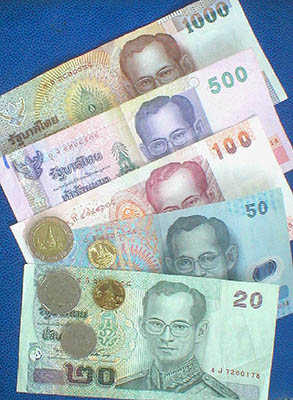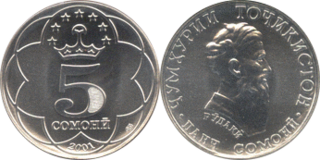The following list is the scheduled issues for year 2010. [1] The schedule is subject to change without prior notice from the National Bank of Poland.
| History of the Polish Cavalry: Chevau-légers of the Imperial Guard of Napoleon I (silver) [2] | ||||
|---|---|---|---|---|
| Coin designer: Andrzej Nowakowski | Mint: Mennica Polska S.A. | |||
| Value: zł 10 | Alloy: Ag 925/1000 (Silver) | Quantity: 100,000 pcs [2] | Quality: Proof | |
| Issued: 3 March 2010 [1] | Dimensions: length: 22.40 mm (0.88 in) width: 32.00 mm (1.26 in) | Weight:14.14 g (0.50 oz; 0.45 ozt) | Market value: 100 zł [1] | |
Obverse: At the top, to the left, the image of an eagle established for the national emblem of the Republic of Poland. In the center stylized images of the elements of uniforms and weaponry of the light cavalryman. At the bottom an inscription: RZECZPOSPOLITA POLSKA (REPUBLIC OF POLAND), over the eagle the mark of the issue year: 2010. Under the left foot of the eagle a symbol of the mint: M/W. Reverse: Stylized image of the light cavalryman on the horseback holding a lance. Underneath an inscription: SZWOLEŻER GWARDII CESARZA NAPOLEONA I (THE LIGHT CAVALRYMAN OF THE NAPOLEON I IMPERIAL GUARD) | ||||
There are eight euro coin denominations, ranging from one cent to two euros. The coins first came into use in 2002. They have a common reverse, portraying a map of Europe, but each country in the eurozone has its own design on the obverse, which means that each coin has a variety of different designs in circulation at once. Four European microstates that are not members of the European Union use the euro as their currency and also have the right to mint coins with their own designs on the obverse side.
Finnish euro coins feature three designs. Heikki Häiväoja provided the design for the 1 cent – 50 cent coins, Pertti Mäkinen provided the design for the 1 euro coin, and Raimo Heino provided the design for the 2 euro coin, which shows cloudberry, the golden berry of northern Finland. All designs feature the 12 stars of the EU and the year of imprint.

The złoty is the official currency and legal tender of Poland. It is subdivided into 100 grosz (gr). It is the most traded currency in Central and Eastern Europe and ranks 21st most-traded in the foreign exchange market.

The baht is the official currency of Thailand. It is divided into 100 satang. The issuance of currency is the responsibility of the Bank of Thailand. SWIFT ranked the Thai baht as the 10th-most-frequently used world payment currency as of January 2019.

The lev is the currency of Bulgaria. In old Bulgarian the word "lev" meant "lion", the word 'lion' in the modern language is lаv. The lev is divided in 100 stotinki. Stotinka in Bulgarian means "a hundredth" and in fact is a translation of the French term "centime". Grammatically the word "stotinka" comes from the word "sto" (сто) - a hundred.

The hryvnia or hryvnya has been the national currency of Ukraine since 2 September 1996. The hryvnia is divided into 100 kopiyok. It is named after a measure of weight used in medieval Kievan Rus'.

The somoni is the currency of Tajikistan. It is subdivided into 100 dirams.

The ruble is the currency of the internationally unrecognized state of Transnistria and is divided into 100 kopecks.

The Narodowy Bank Polski, often abbreviated to NBP, is the central bank of Poland, founded in 1945. It controls the issuing of Poland's currency, the Polish złoty. The bank is headquartered in Warsaw, and has branches in 16 major Polish cities. The NBP represents Poland in the European System of Central Banks, an EU organization.

The Rwandan franc is the currency of Rwanda. It is subdivided into 100 centimes.

The shilling is the currency of Kenya. It is divided into 100 cents.

Commemorative coins in Poland are special coins minted by the Polish Mint and issued by the National Bank of Poland. Each year several collector and commemorative coins are minted to mark political, historical, scientific, cultural, sporting, humanitarian and other similar events of general importance to Poland or with wider international significance. The material used for production of the commemorative coins is usually alloy of silver Ag 925, gold Au 900 or pure gold Au 999,9. Most of the commemorative coins have their equivalents in occasional coins of common use, minted from special brass called “Nordic Gold”.

Euro gold and silver commemorative coins are special euro coins minted and issued by member states of the Eurozone, mainly in gold and silver, although other precious metals are also used in rare occasions. Slovenia introduced the euro (€) on 1 January 2007. Since then, the Bank of Slovenia have been issuing both normal issues of Slovenian euro coins, which are intended for circulation, and commemorative euro coins in gold and silver.

The 10 Polish Złotych note is the lowest value złoty banknote and has been used since the redenomination of the złoty in 1995. The note is used as the sole currency in Poland, a country with a population of about 38 million.
Poland has a rich selection of Gold and Silver commemorative coins. In the year 2008 coins were launched in the series: "Animals of the World", "Monuments of Material Culture in Poland", "Polish Painters of the Turn of 19th and 20th Centuries", "The Polish Calendar of Traditional Customs and Rituals", "History of the Polish Zloty", and various occasional coins.
Poland has a rich selection of Gold and Silver commemorative coins. In the year 2007 coins were launched in the series: "Animals of the World", "Polish Travelers and Explorers", "History of the Polish Zloty", "Monuments of Material Culture in Poland", "History of the Polish Cavalry", "Polish Painters of the Turn of 19th and 20th Centuries" and various occasional coins.
Poland has a rich selection of Gold and Silver commemorative coins. In the year 2006 coins were launched in the series: "Animals of the World", "History of the Polish Złoty", "The Polish Calendar of Traditional Customs and Rituals", "Monuments of Material Culture in Poland" ,"History of the Polish Cavalry", "Polish Painters of the Turn of 19th and 20th Centuries" and various occasional coins.
Poland has a rich selection of gold and silver commemorative coins. In the year 2000 coins were launched in the series: "Animals of the World", "Castles and palaces of Poland", "Polish kings and princes" and various occasional coins.
In the year 2009 coins were issued in the series: "History of the Polish Cavalry", "Animals of the World", "Poland’s path to liberation", "History of Polish Popular Music", "Polish Painters" and various occasional coins.
Poland has a rich selection of gold and silver commemorative coins. In 2002 coins were launched in the series: "Polish kings and princes", "The Animals of the World", "Polish Travelers and Explorers", "Monuments of Material Culture in Poland", "Polish Painters of the Turn of 19th & 20th Centuries" and various occasional coins.